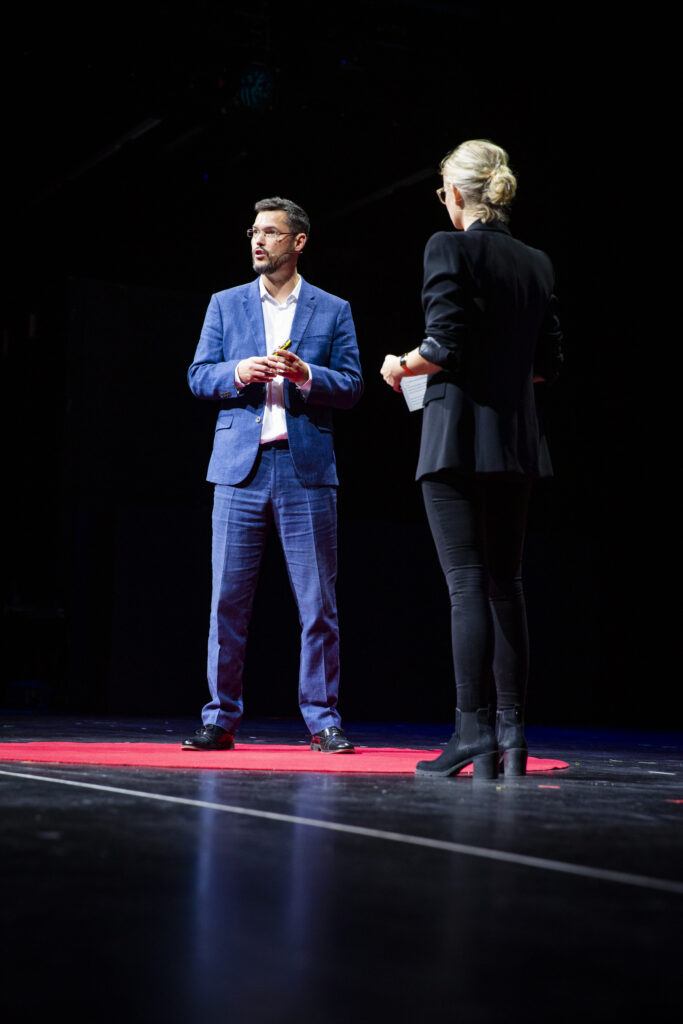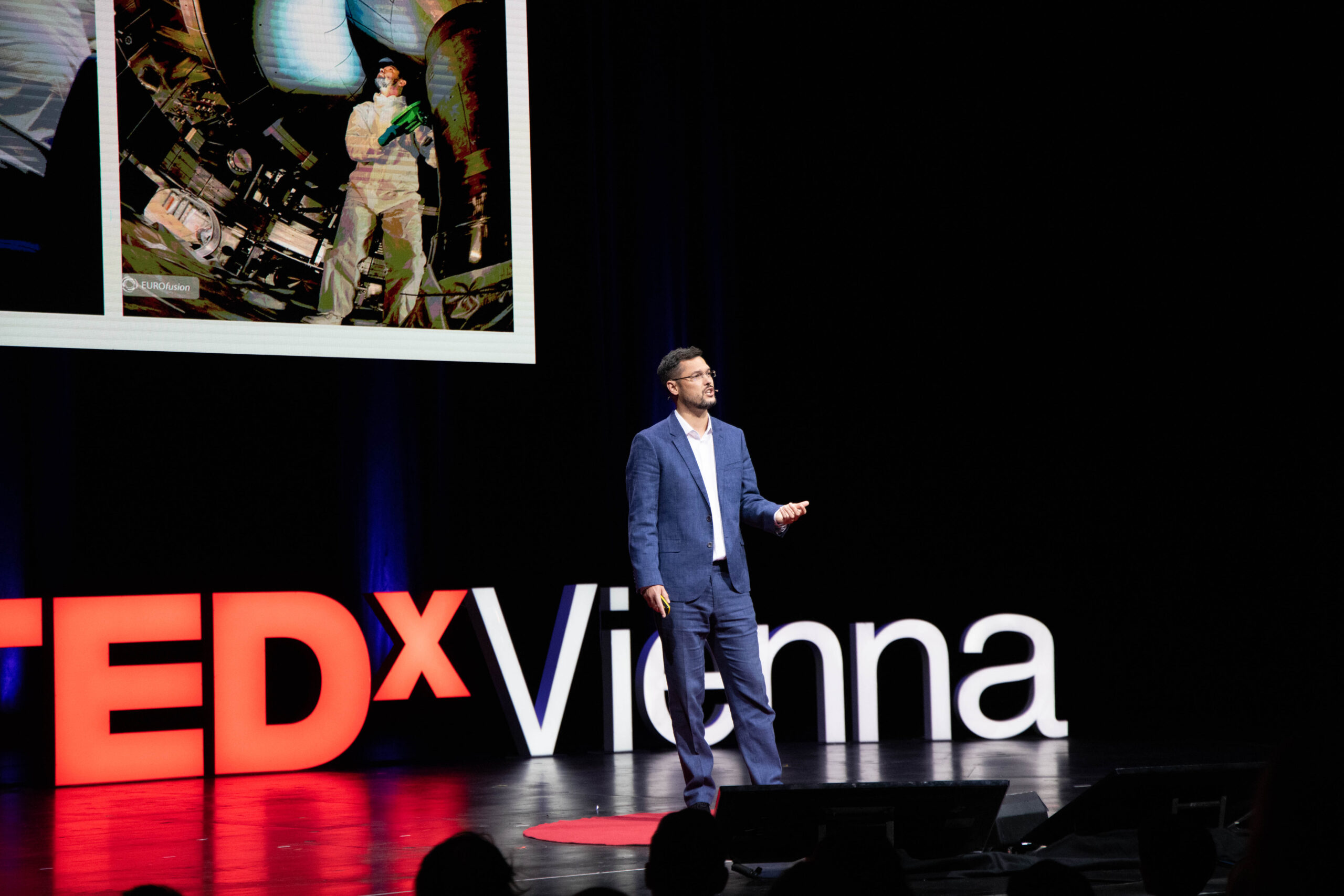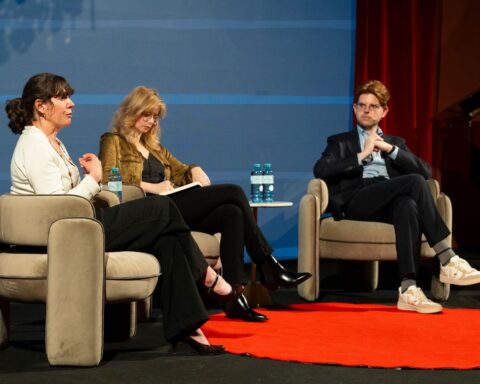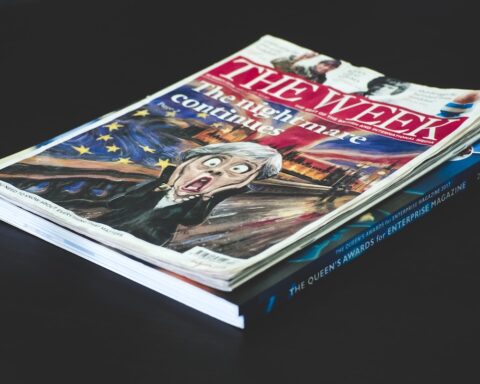This year, we have been feeling the impact of climate change more than ever, with heat waves worldwide causing record-breaking temperatures – a topic equally concerning for both activists and researchers. Together with his team from the Joint European Torus (JET) Operations, Joe Milnes has been working on an energy source that can help decrease our carbon emissions. He is the head of JET operations and elaborated on this during his talk at TEDxVienna ON THE RISE.
JET is the main research center of the European Fusion Programme. It is based at and operated by the Culham Centre of Fusion Energy, which is part of the UK Atomic Energy Authority. The studies at JET focus on the conditions required to produce electric power through fusion energy.
Fusion is the process during which atoms join into a single entity, which releases energy as a by-product and occurs organically in the centers of stars.
Some of the greatest benefits of producing energy through fusion technology are that no carbon emissions are released, and the gasses used as sources are abundant in nature worldwide. Thanks to these advantages, fusion energy is regarded as a potential climate-friendly alternative to our current energy sources.
Earlier this year, JET set a milestone in the technological advancement of fusion energy production. Their experiment broke the world record for fusion energy by achieving an output of 59 megajoules through fusion technology. This accomplishment exceeds the double of the output of the previous world record, which was set 25 years ago.
Although this is a remarkable success in fusion history, Joe explained in this talk how much more research is necessary for fusion energy to be used comprehensively as an energy source.
One of the biggest challenges is building the first power station to host the production from material resilient enough to withstand the large heat required in the process. However, once the answer to this and a few other scientific and technological questions is found, multiple power stations could be constructed to provide household energy. In this regard, this event has demonstrated that fusion energy is not only a realistic alternative worthwhile to invest into, but that it is also possible to reduce our carbon footprint significantly.
Joe Milnes is the head of JET and held a talk at the TEDxVienna ON THE RISE event, during which he gave an insight on their work, touched upon the benefits and challenges of producing fusion energy, and how this can help us combat climate change.
After his talk, I had the opportunity to sit down with Joe and learn more about his vision regarding the future of fusion energy and his connection to his research.
How do you explain the work that you are doing to those who are unfamiliar with the topic of nuclear fusion?
The simple way of putting it is we’re trying to put the sun in a bottle. We’re trying to recreate the same processes that power us, that give us all the heat and the light from the sun and the stars. We’re trying to recreate those conditions inside a machine because if you can get that right, you can produce a huge amount of energy in the form of heat with no carbon dioxide with millions of years worth of fuel potentially. So if you can do that successfully, you can use that energy to create electricity for the world, and because there’s so much fuel spread all over the world, because there’s no CO2, it’s the perfect energy source except for one detail – we can’t do it yet. We haven’t yet built a machine that can produce more power out than we put in.
How do you think this breakthrough will impact people’s everyday lives, i.e. financially, economically, and politically?
Once we’ve shown that we can put fusion electricity on the grid and do that economically, it changes everything. A lot of wars are potentially fought over energy. If we don’t decarbonize the way we produce energy this century, we are in real trouble. You can see what’s happening in Pakistan with the floods and heat waves that we’ve had, and how this is having a real impact now. If we could turn around and tell the world, “You don’t have to worry about energy production anymore, we’ve got enough energy for thousands and thousands of years with no CO2,” that would make one of the – if not the biggest problem – go away. So, the impact is massive on a global scale once we’ve done it and rolled out lots of these power stations.
But it’s hard. And it’s going to take a lot of hard work, and then it will take a little bit of time even once we’ve built the first one because we need to build hundreds of these power stations for it to make a dent in the energy mix and reduce our CO2. I can’t think of a sector that it doesn’t affect. Energy drives everything, right? People think economies are run on money, but without energy, money is just worthless bits of paper. The only way we can do things in the world is by having energy. And we need to know how to make that energy from a carbon-free source. And fusion is the ultimate carbon-free energy source.
When talking about your work to others, what do you find most challenging to explain? Do you ever receive criticism?
I work for a government organization and the biggest critique is, “Why are we spending taxpayers’ money on something that is definitely not going to deliver tomorrow? Shouldn’t we be spending that money on things that can have an immediate impact?” And I respect those comments. My take, as I said in the speech, is that we shouldn’t do either fusion or something else. We need to be doing everything we possibly can to sort out the climate crisis. So we should be increasing investment in renewables, energy efficiency, carbon capture, and nuclear fission. And then we also need to be thinking about the long game and that’s fusion basically. So the criticism I get sometimes is, “We’ve been paying millions of pounds into this for decades now and you’re still telling us you’ve got years to go. Is this the right thing to be doing?”

When we broke the nuclear fusion energy record in JET at the end of last year and we sustained it for a decent period, people were asking “Well, why isn’t that it? Why can’t you just build a machine right now? You create the mini star, and it just stays there happily and gives us the power.” It’s difficult, though. We can do some great things in experiments, but when you just want a power station where the star, the mini star, just sits for days, weeks on end and just burns away and gives us the energy, there are still quite a few scientific and engineering challenges to get to that point. It’s quite hard to explain sometimes what those are; they’re quite subtle.
What is your main motivation for working on fusion energy? Is there this one goal that you were always pursuing?
I’m not going to lie, just the raw engineering challenges are great fun as an engineer. You like working on, “Oh, let’s see if we can build something like this,” so that’s fun in itself. But given the importance, we can’t just be doing it because it’s fun. It happens to be fun, but that’s not why I do it. I would love to make a cup of tea from electricity off the grid that I know has come from a fusion power station. In my lifetime for sure, it won’t be the case that we have thousands of these reactors, but it would be great to have just one fusion power plant somewhere putting net power. I’d be thinking, “Right. Dedicated 40 years of my life to this.” And we know we can do it, now we’ve got that proof of principle. We can now roll that out and I can feel happy that my kids, my grandkids and all the future generations will have this as an energy source.

It’s nice waking up in the morning and knowing that you’re going to go and work on something that potentially can change the world. You never have to think “Why am I doing this?” because, to me, climate change and the energy crisis are by far the biggest threat to our existence. And I’m working on that; I’m working on something that potentially could make a big difference.
An analogy that some people have used in fusion is when you built cathedrals hundreds of years ago, the people that started to lay the foundation stones would be picturing what the cathedral’s gonna look like, but knowing that they’d be dead before the cathedral was finished. But still, they would be taking a lot of pride in being a part of something that’s bigger than themselves, something that’s going to outlive them. Now I think I’ll see fusion power on the grid in my lifetime, but I won’t see the fusion economy that will save the world. That will come after I’ve gone, but I’m comfortable with being sort of part of the cathedral builders and knowing that I’m doing my bit, laying the foundations for a future, which hopefully means that we’ve got a reasonable world to pass on to future generations.
From your talk, I had the impression that you’re trying to keep nuclear fusion energy as a resource and a professional field accessible to everyone. Would you agree?
Fusion needs to be for everybody and having experienced what a career is like in fusion, I can’t recommend it highly enough. So if anyone is interested in science engineering, both in terms of the really intellectual stuff, but also the hands-on and how you take these really quite intellectual ideas and actually turn that into something real, and wants to be part of something that can change the world then fusion is brilliant. So I would encourage anyone to come in and get stuck in.
How did these findings impact you personally? Just picture the moment when you broke the world records. What were you feeling?
When we set out to break the fusion record, we did a whole bunch of really important science, which was as important as a fusion record, but it was the record that made the headlines, right? It took about ten years to plan it and do it, and I worked with hundreds of people that worked many late nights, and we had some times when we thought it wasn’t going to happen. It’s a real rollercoaster. So when you actually achieve it, it’s a sense of excitement but also relief.
My immediate reaction was “Oh, great. This is a big step forward on the quest for fusion energy that comes later.” We worked so hard to do that and we managed to achieve it when there were times when we weren’t sure we were going to get there.
So it’s a combination of elation and just pure joy, but also “Whew, that was close.” It takes quite a lot of funding and support to get there and people put a lot of faith in the organization, so you want to pay that back with the results that you get.
Unfortunately, it was during the pandemic. Had it not been for the pandemic, the control room would’ve been packed with people, and champagne corks would no doubt have been flying! But it was a pandemic, so there were only about six people in the control room with masks on, and everyone else was on computer screens cheering. It was very exciting, but also a lot of relief.
Watch Joe’s full talk here:
You can learn more about his work at JET Operations by visiting their website.
reviewed by Sarah Guvi, proofread by Juxhina Malaj





